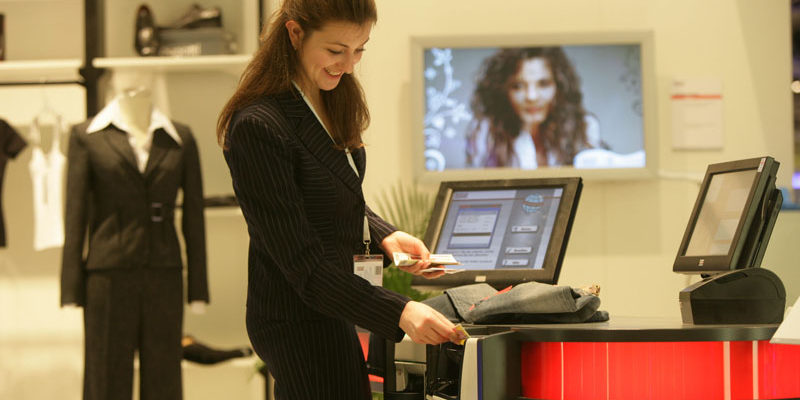Telecom & Technology Consulting

Retailers no longer compete solely on persuading people to walk into their stores. Today, they also battle it out based on their technical wizardry. Specifically, the technology that creates engaging experiences while also making it easier to buy.
Here are some of today’s best examples:
Amazon Go
Amazon has fulfilled every shopper’s dream: No more waiting in lines. At Amazon Go you grab what you need and walk out of the store, all with payment automatically made through the Amazon Go app. Automated checkout is possible with a combination of computer vision, machine learning, and sensor technology.
Nike
Nike’s New York City store includes a “Speed Shop”, where customers can reserve shoes online to try on in-store. Even more impressive, they get a locker with their name on it, which they can unlock with their smartphone. And to top it off, they can buy with their mobile device, providing a shopping experience that involves no waiting in lines, and no need to interact with Nike employees.
Kroger’s
Grocery stores are increasingly adopting digital technical technology, and Kroger seems to be leading the pack. Last year they implemented digital price tag technology, which allows them to display – and instantly update – pricing and nutritional information. Soon, this technology will integrate with their customers’ smartphones, notifying them about what matches their shopping lists and pointing out special offers.
Target
The checkout lines at Target can be exhausting. Understanding the problem, Target recently launched a mobile wallet that speeds up the buying process. In fact, the mobile wallet is four times faster than the traditional payment method. Technology like this not only makes customers happy during the purchase, it’s likely to bring them back to the store again.
Audi
If you’re like most people these days, you first shop for a car online and then go to a dealer. Realizing this new mindset, Audi installed a virtual reality experience in showrooms. Now car shoppers can customize a model, and explore specific interior and exterior details. With this technology, Audi gives consumers an interactive experience that helps them make smarter buying decisions.
Specsavers
Anyone who wears glasses knows how difficult it is to choose the right pair. It can take hours. That’s why Specsavers started a service called Frame Styler. Using in-store tablets, this imaging software produces a 3D model of your face, and then shows options that work best with your face shape, gender, and age. Customers save a lot of time, and find the right look without the usual frustration.
Sephora
Just as Sephora’s been on the cutting edge of make-up, they’re also innovating with technology. They recently opened some stores in France that includes a Beauty Hub. These sections include a Virtual Artist service, where customers can see how specific products will look without actually applying them.
Ted Baker
Clothing retailer Ted Baker had a brilliant idea. Instead of store windows being something people just look at, why not make them interactive? To do so they installed interactive windows to promote their “Keeping up with the Bakers” campaign. Shoppers were persuaded to place their hands on the window, which caused a camera to photograph their face. This image would then be placed into scenes from “Keeping up with the Bakers” and shared across social media. Participants were also entered into a raffle to win a shopping spree.